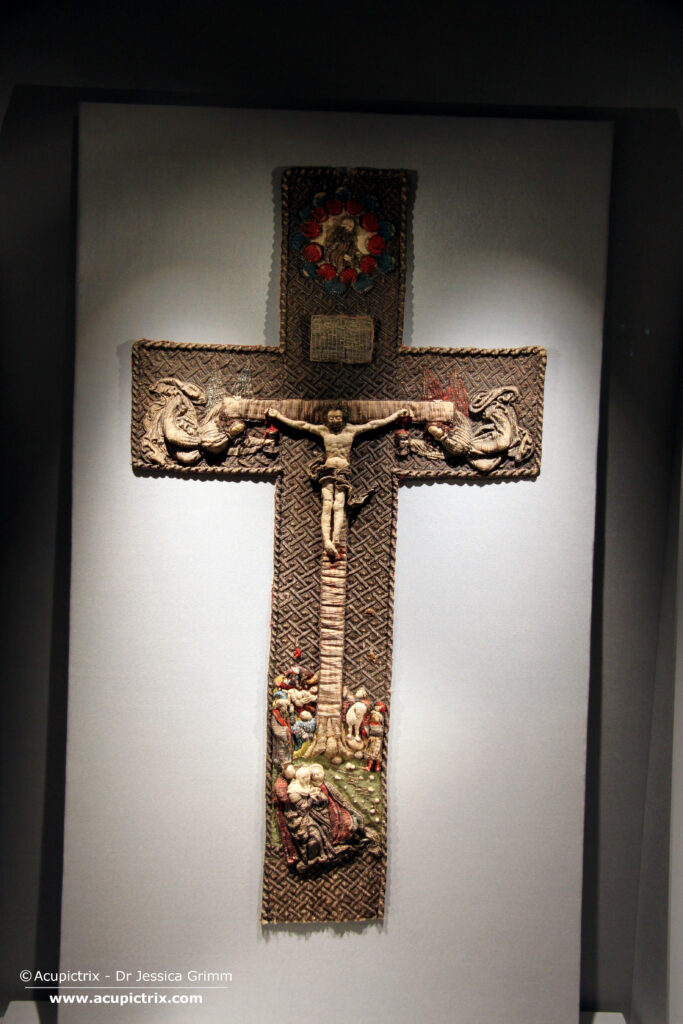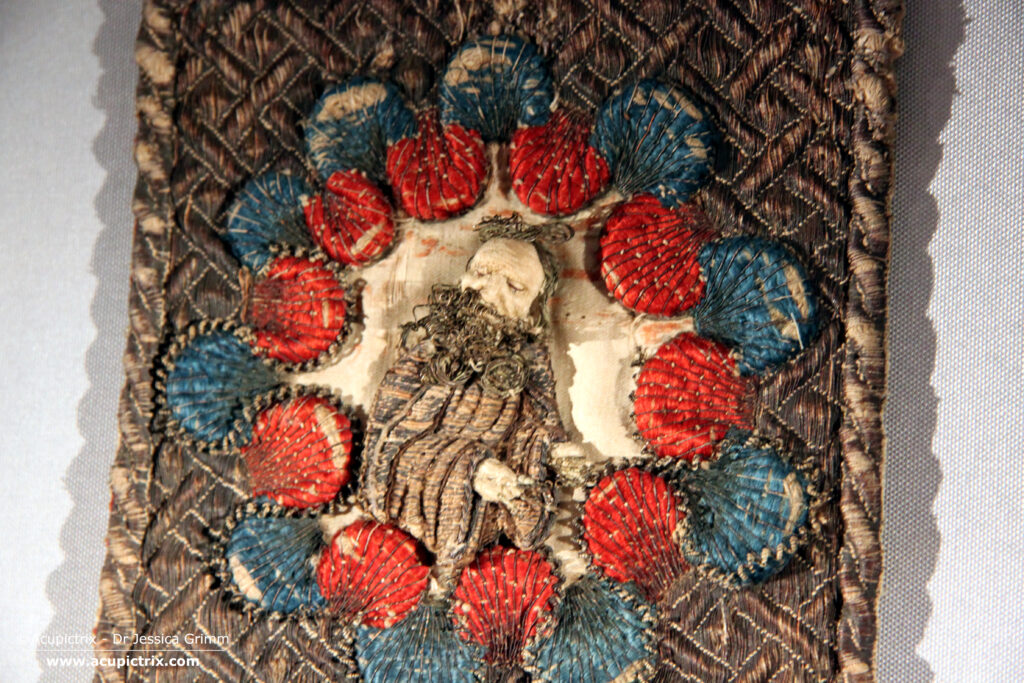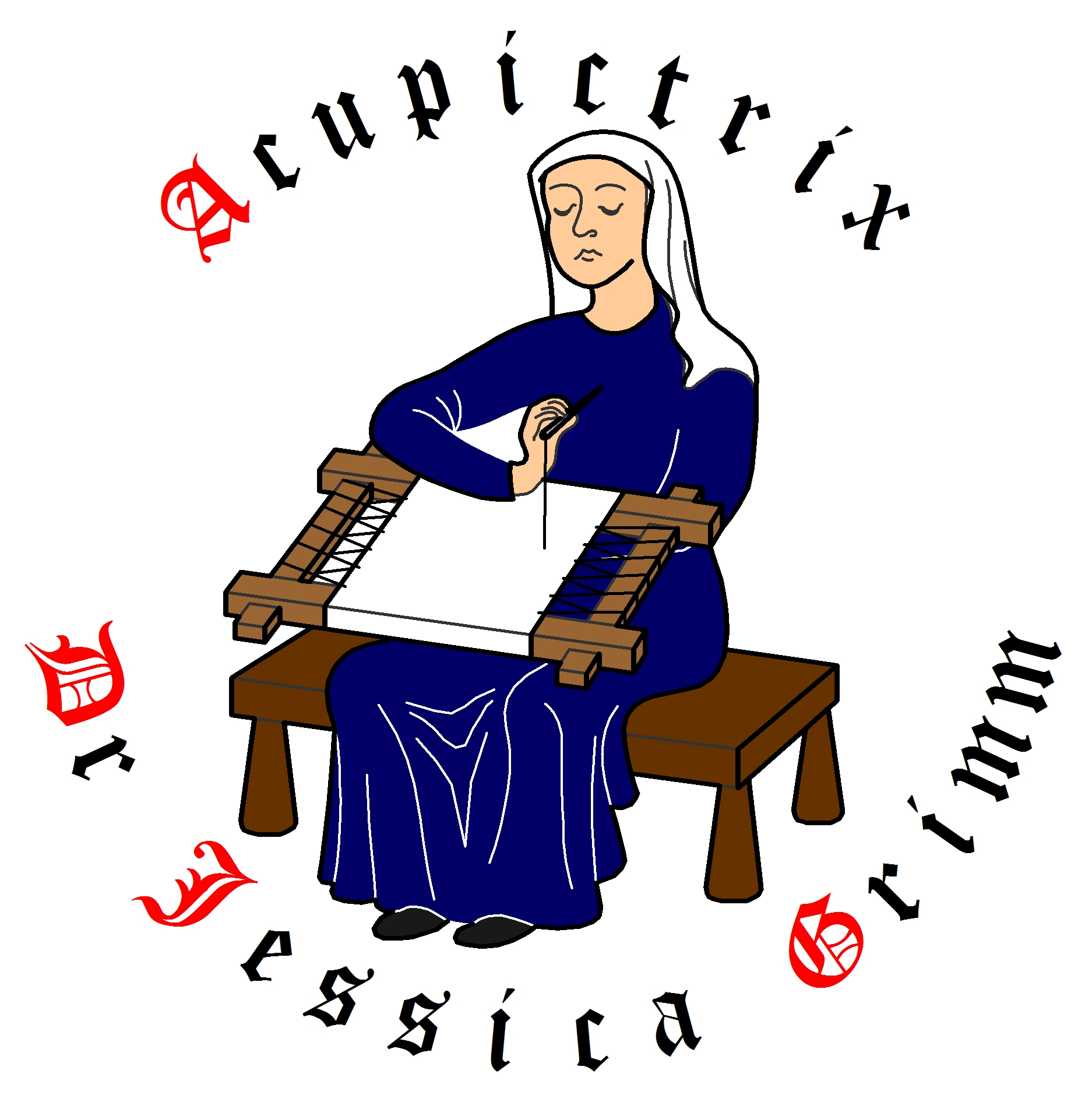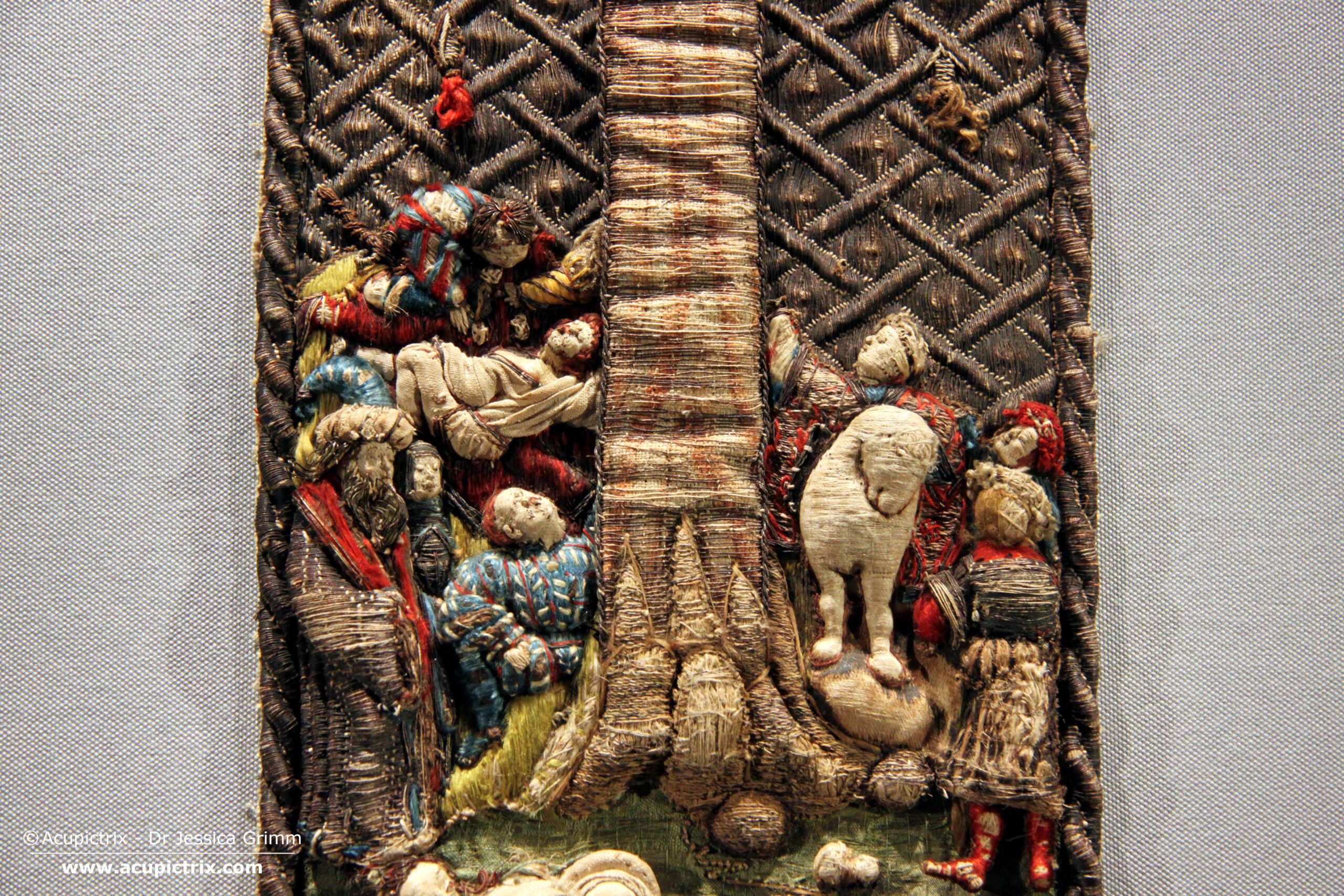Your basket is currently empty!
Last year, whilst on my way to visit my friend Sister M. Chiara, I stumbled upon some lovely medieval stumpwork at the Domschatzmuseum in Chur, Switzerland. Until then, I had no idea that these pieces existed. Late medieval stumpwork is a lot less rare than most people think. However, as these pieces are so unconventional, not many art historians have dared to study them in depth. After all, they are not your average embroidery, but they aren’t sculpture either. Nowadays, we would probably refer to them as mixed media. Let’s have a closer look!

The medieval stumpwork chasuble cross shows the Crucifixion. Jesus has been nailed to a T-cross that resembles a tree trunk at its base (note the madder painting underneath the embroidery). Two angels are capturing his blood in chalices, referring to the Eucharist. Godfather sits in a cloud above the cross. Below the cross, we see a group of spectators – some on horseback. The figures in the foreground represent a fainting Mary supported by Saint John and Mary Magdalene.

The number of figures represented under the cross is quite remarkable. They probably tell two additional stories relating to the Crucifixion. On the left, I think that the two figures at the top are actually fighting over who gets Jesus’ cloak. The soldier on horseback points up to Jesus; he probably represents Longinus, the centurion who recognises Jesus as being the son of God.

Let’s have a closer look at the embroidery techniques used. When we compare the heads of Jesus and God with those of the figures underneath the cross, there’s a marked difference. The former have rather sharp features, whereas the latter have less-defined, rounded heads. The heads with sharp features, and Jesus’ sharp-edged body, were probably formed in a mould using scraps of fabric, fibres, and glue. The rounded heads were probably only stuffed with fibres (often called Werg in German). The hair of all the figures consists of wire. The hands appear to contain wire as well.
The background is formed of couched gold threads over string padding, creating a basket-weave diaper pattern. The border of the chasuble cross consists of a twisted string padding covered with gimped couching. As all the gold has darkened considerably, the original gold threads did not have a high gold content. It is even quite likely that this is membrane gold—a type of gold thread widely used in the Germanic regions of medieval Europe.

And there’s a bit of whimsy, too! See the angel’s hand on top of the cross? That’s the standard way angels hover in position when catching something.
To the best of my knowledge, there’s no comparable piece of medieval stumpwork embroidery that shows such a large crowd under the cross. And even those pieces that depict a much simpler version of the Crucifixion, with angels catching the blood, are very different in composition and embroidery techniques. This likely indicates that these pieces were the unique brainchild of the master embroiderer and his workshop. All in all, this piece of high-quality medieval stumpwork was fit for a vestment at a cathedral church, such as at Chur, around the beginning of the 16th century.
P.S. Many thanks to Anna Barbara Müller, curator of Domschatzmuseum Chur, for providing me with additional information regarding this chasuble cross.
8 responses to “Medieval Stumpwork: a chasuble cross @ Domschatzmuseum Chur”
-
Those angels are marvellous — and what about the blood running the length of the cross/tree to the ground. Rich symbolism there. What a fantastic find. I often wonder how many other treasures have been carefully put away over the centuries, and are just waiting to be uncovered? These stump work pieces are a perfect subject for some enterprising scholar’s doctorate. Thanks for treating us to this and describing it so well.
-
You are very welcome, Nancy! And I agree, this would make for a lovely doctorate. Not too many pieces and not to geographically dispersed.
-
-
So very unusual! The figures and faces are very unique and capture each individual face and figure so well considering how old and worn they are! A really beautiful example of medieval stump work.
-
This is very interesting to see. Why was it made, as a hanging in a church or something else?
-
It is a chasuble cross, Lyn. It would have been sewn onto the back of a chasuble.
-
-
Oh, the slashing on the doublet lower left is so well done! Thanks for showing this, it’s wonderful
-
Thank you so much for your research into Medieval Embroidery and your sharing of your finds.
-
Thank you Jessica for sharing this beautiful piece. The color retention is remarkable considering the embroidery’s age. Thank you too for answering the question that came to mind of what the faces may have been constructed from. The faces are fascinating, each so individual and expressive.


Leave a Reply